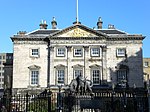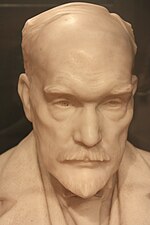Edinburgh bus station

Edinburgh bus station (previously St Andrew Square bus station) is the bus station serving central Edinburgh, which opened in its present form in February 2003.The bus station is on Elder Street, where the buses enter, with pedestrian access also at St Andrew Square. Buses and coaches serve Glasgow, Berwick-upon-Tweed, Perth, Dundee, Aberdeen and Fife. Megabus and National Express also serve the station to destinations that are mainly in England and Wales. The bus station is along with the adjacent Multrees Walk development, which includes Harvey Nichols and many other high-end retailers and was designed by the Edinburgh office of the architectural firm CDA.
Excerpt from the Wikipedia article Edinburgh bus station (License: CC BY-SA 3.0, Authors, Images).Edinburgh bus station
North Clyde Street Lane, City of Edinburgh New Town/Broughton
Geographical coordinates (GPS) Address Nearby Places Show on map
Geographical coordinates (GPS)
| Latitude | Longitude |
|---|---|
| N 55.9555 ° | E -3.1917 ° |
Address
Edinburgh Bus Station
North Clyde Street Lane
EH1 3EB City of Edinburgh, New Town/Broughton
Scotland, United Kingdom
Open on Google Maps











